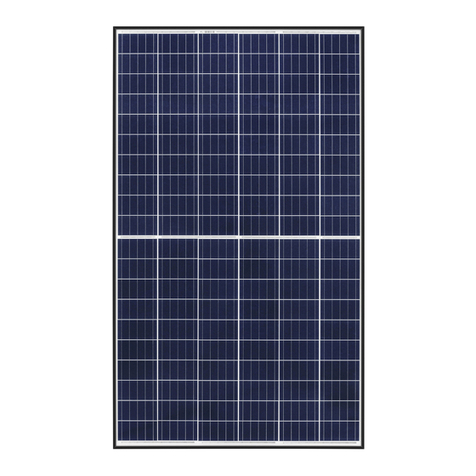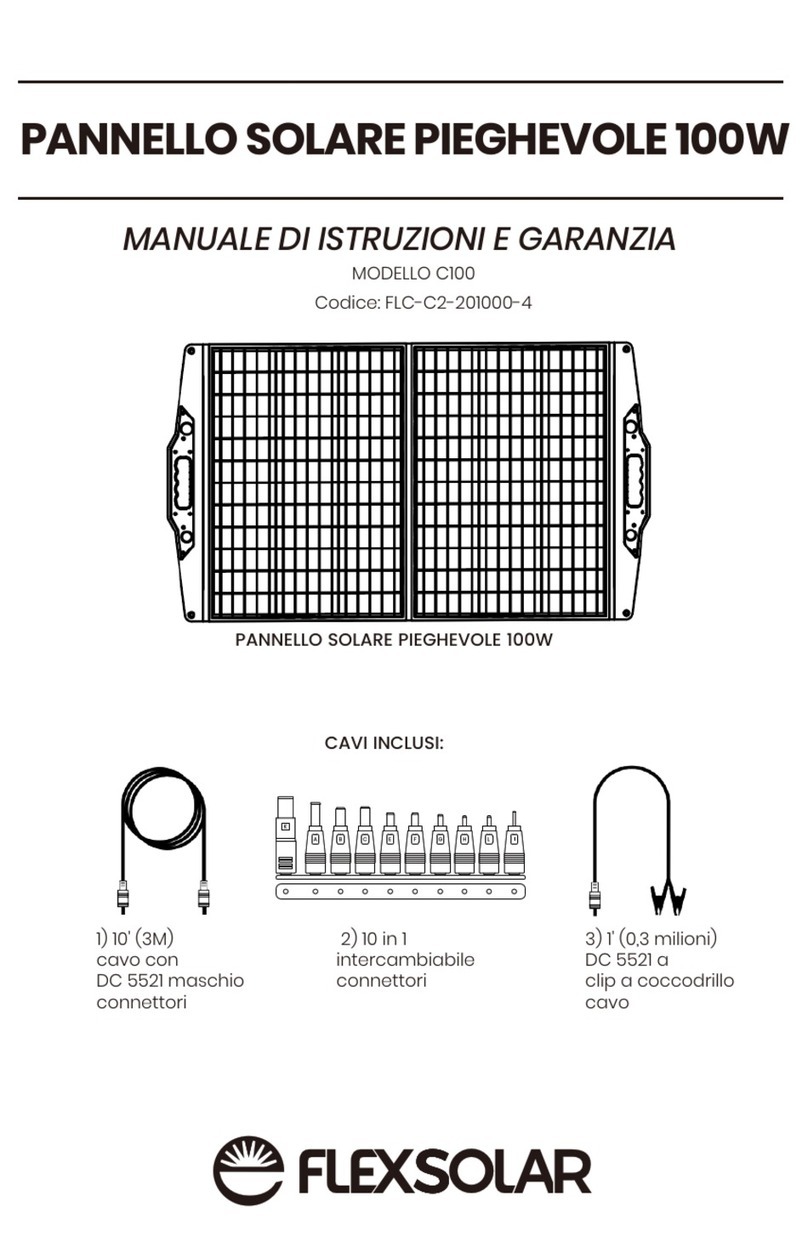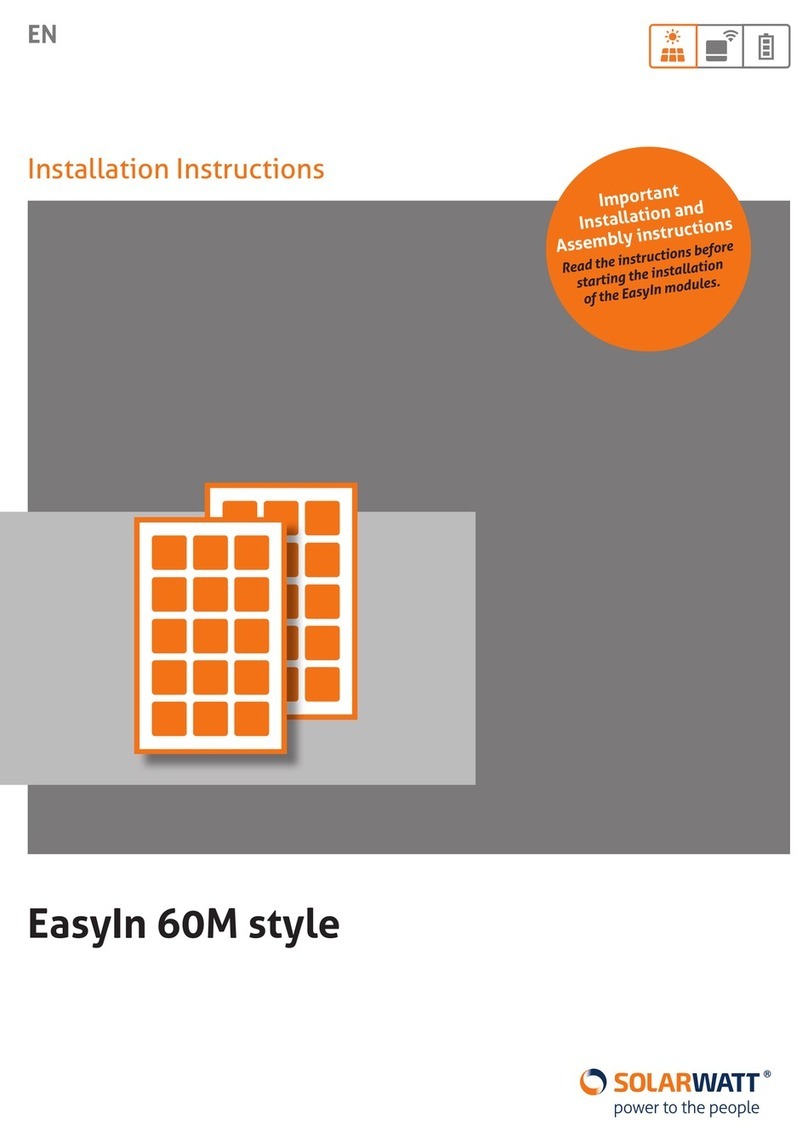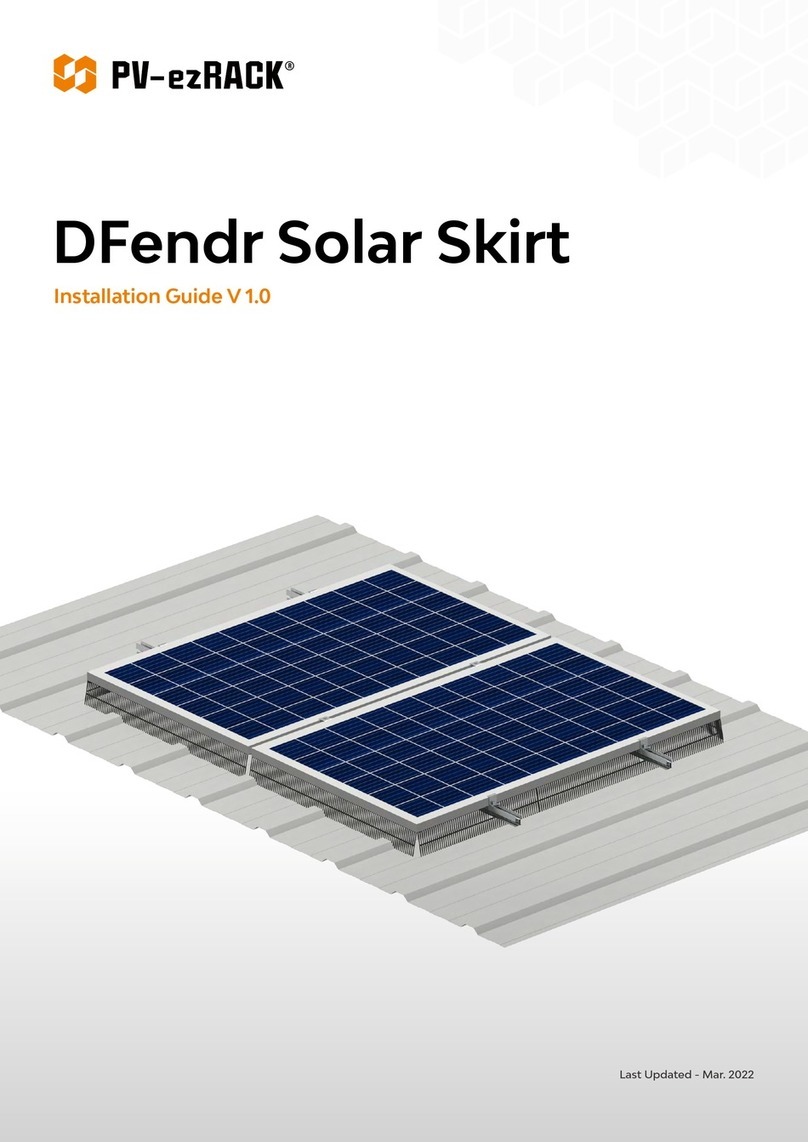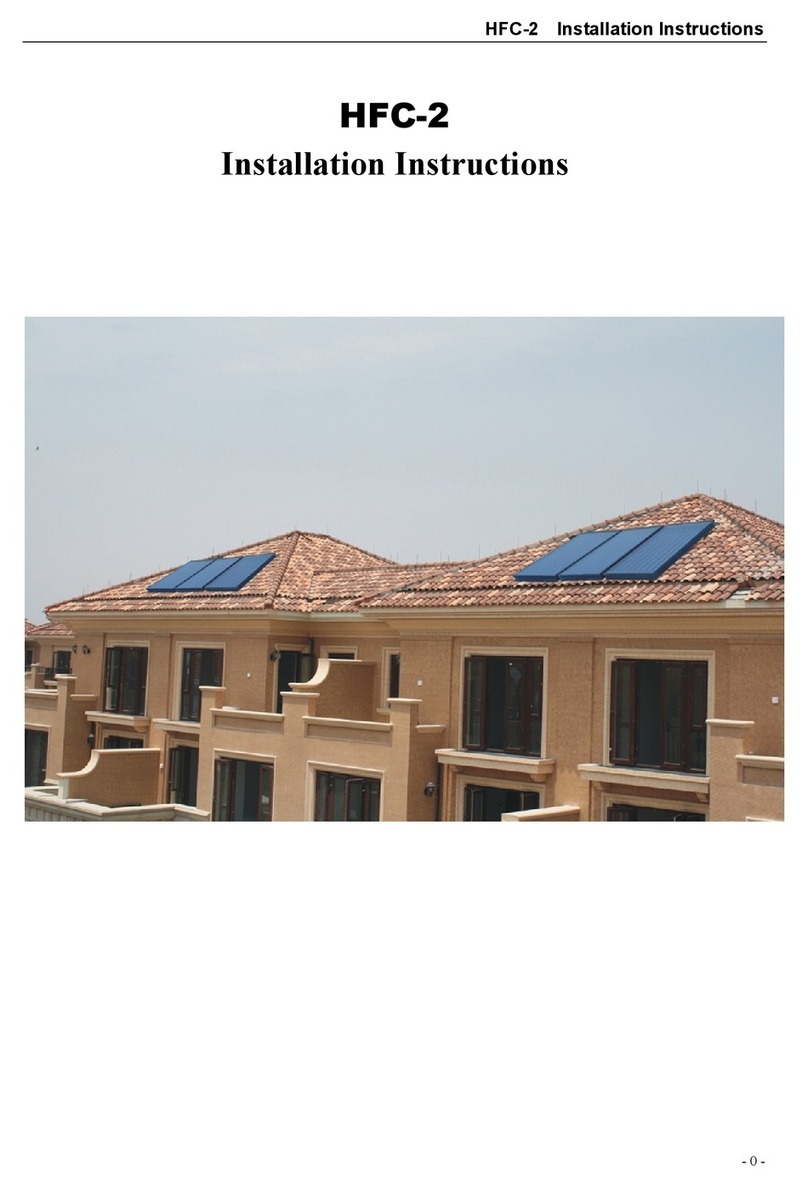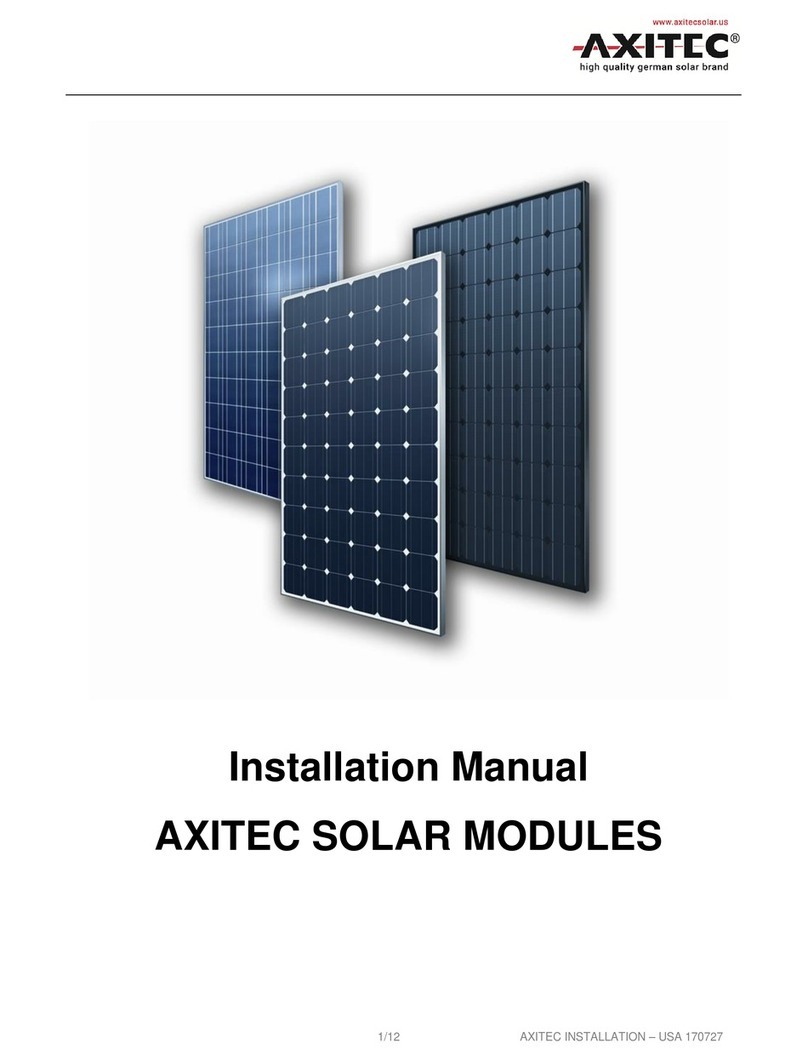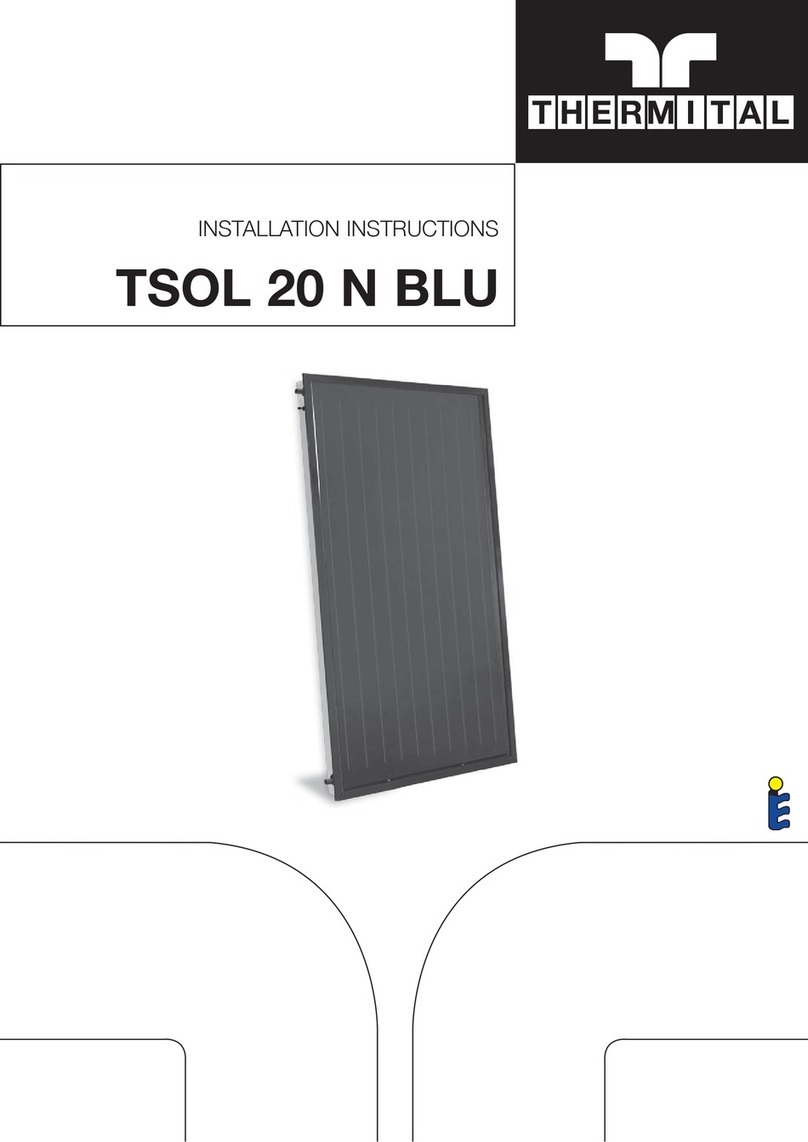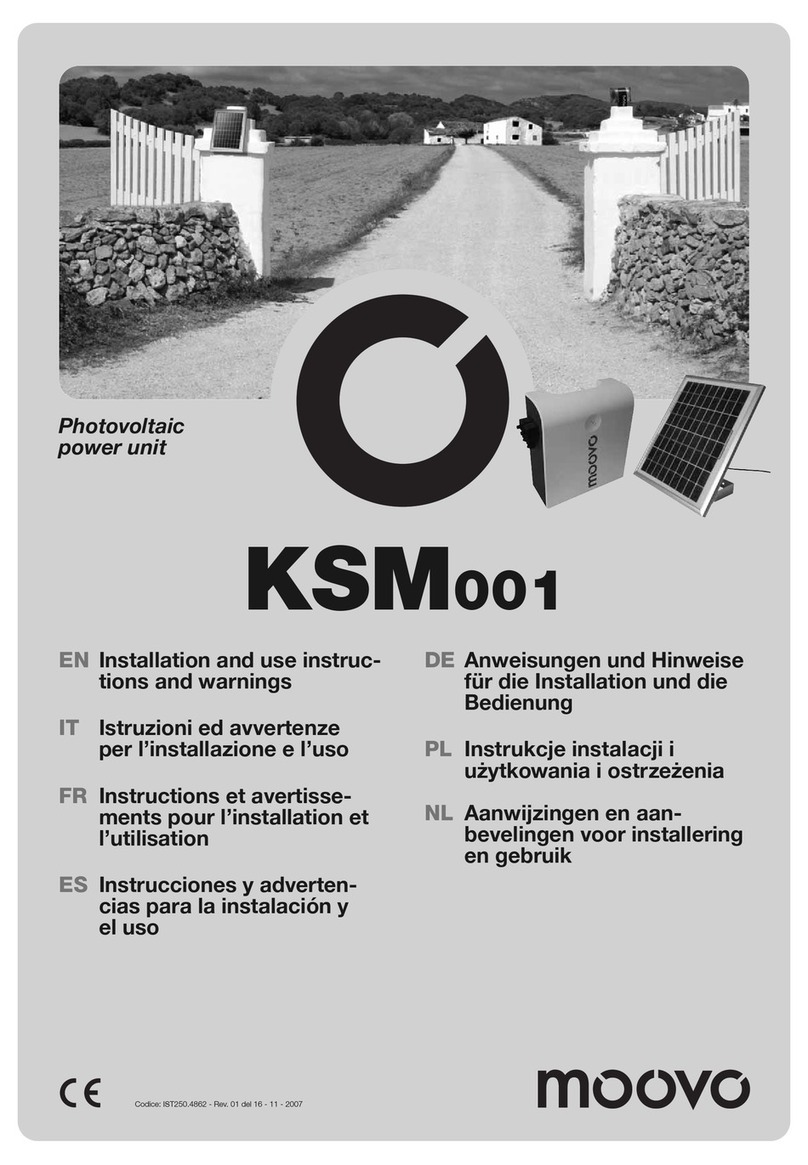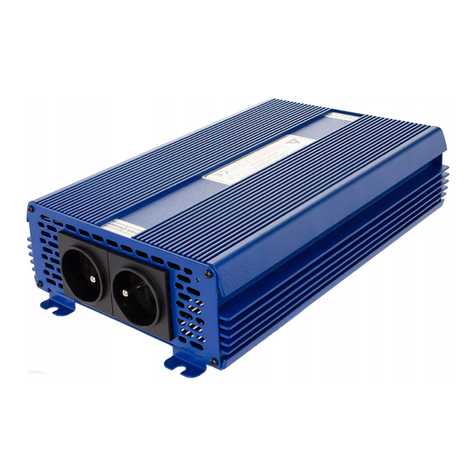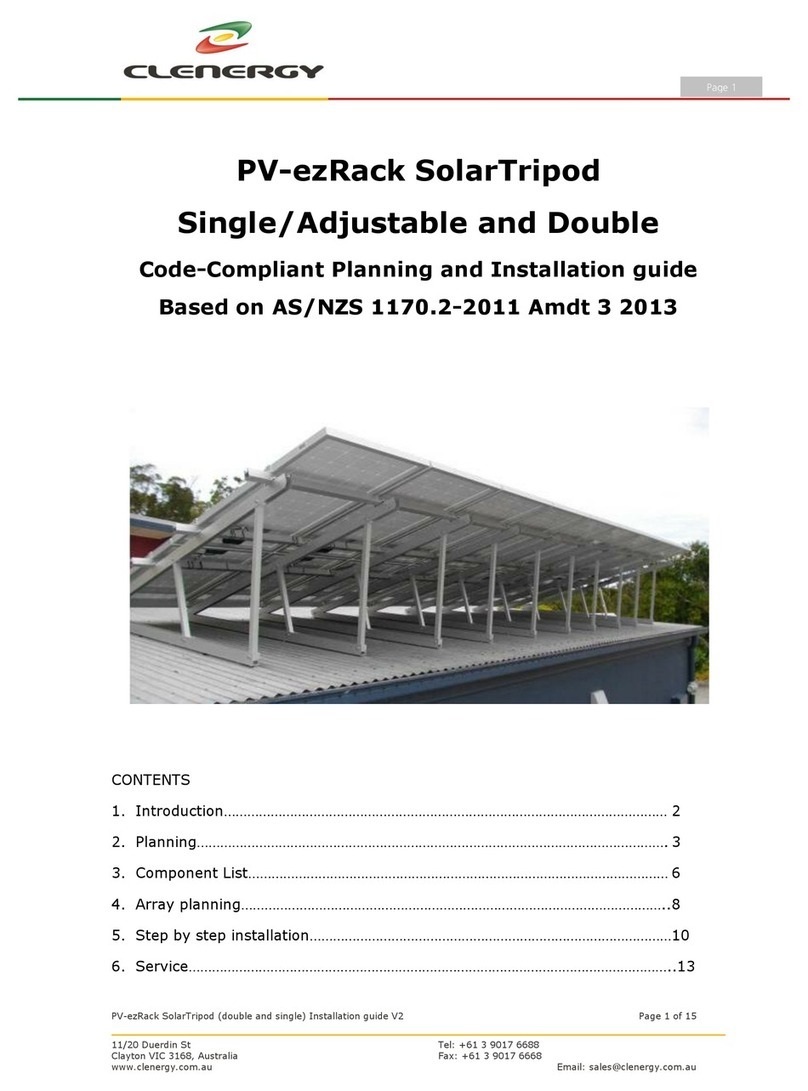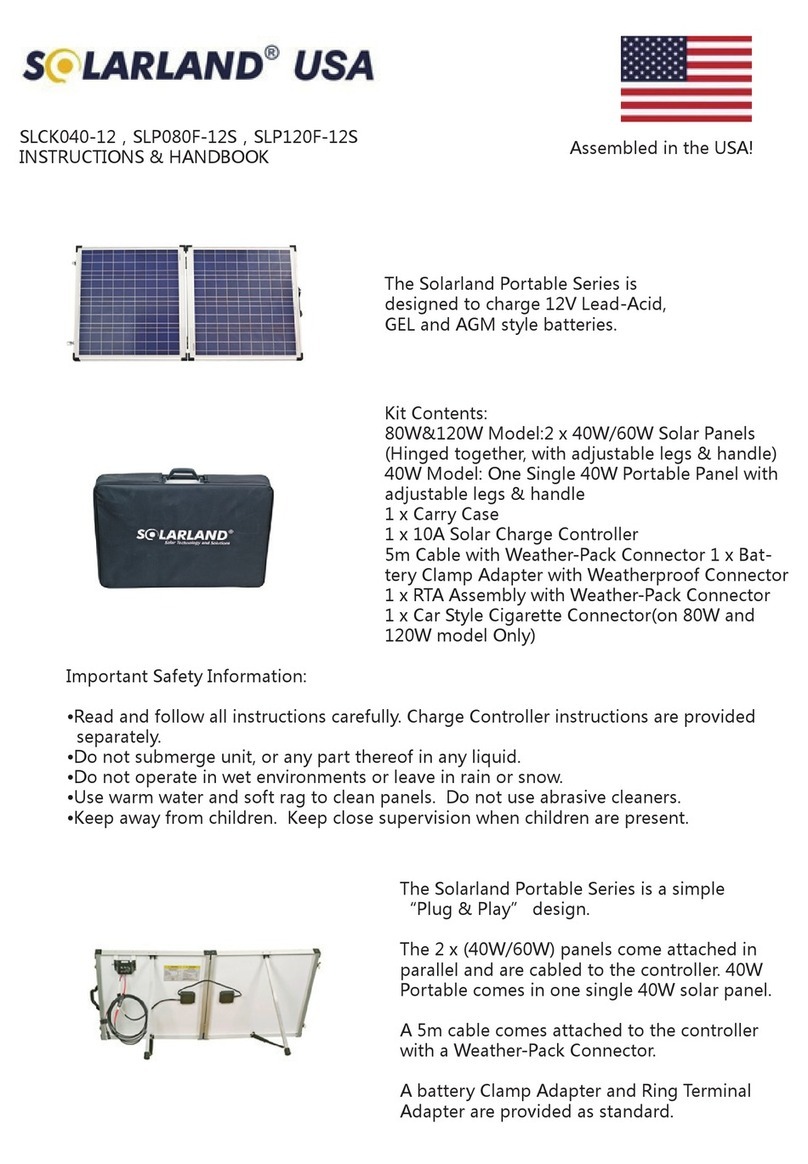Rev. 1.0 (12/19/2022) 6
2.) Installation Overview
The RaVolt installation follows a standard process consisting of the following steps:
1.) Unloading Equipment-Trucks will arrive with a palleted enclosure, palleted generator,
concrete pads, and batteries. It is recommended to level and set pads first, and then set the
enclosure and generators directly off the truck.
2.) Placing the Enclosure & Generator Pads-Choosing a desired location for both pads,
typically on the northern side of the array, about 6 feet apart. This step also consists of
leveling and compacting the designated pad locations.
3.) Placing the Enclosure & Generator- Using slings and shackles on a capable machine
(skid steer, mini excavator, or tractor), rig and place the equipment on their dedicated
concrete pads.
4.) Trenching & Conduit- There will be 2 main trenches, the AC Out trench and the
generator circuit. The AC Out trench will be from the load center on the side of the unit, to
the AC disconnect on the side of the home. The generator circuit will be from the generator
to the enclosure.
5.) Terminations- The RaVolt unit arrives with pre-installed and pre-configured equipment.
There are roughly 10 additional terminations to make on a standard project.
6.) QA/QC, Commissioning, Photos- Installers will inspect the work using the QA/QC
guidelines. There is a short commissioning process to ensure process functionality,
followed by some photos for product warranties.
These 6 steps are broken down in greater detail throughout this installation guide.
